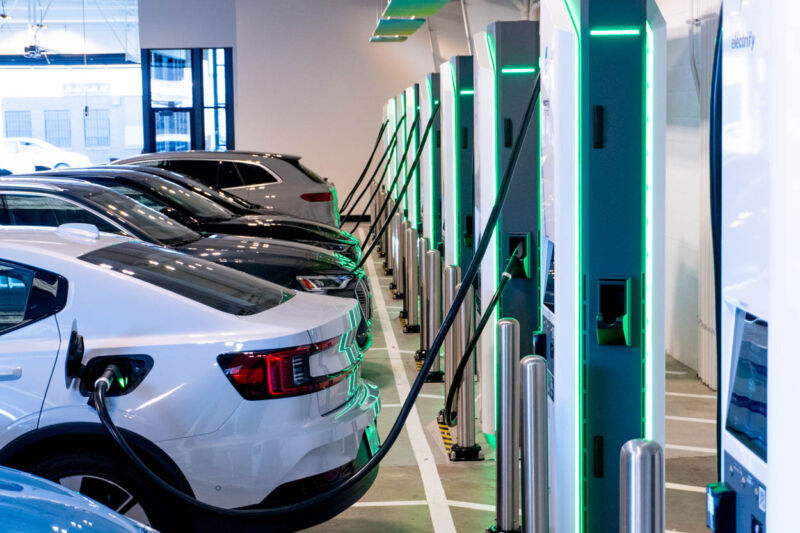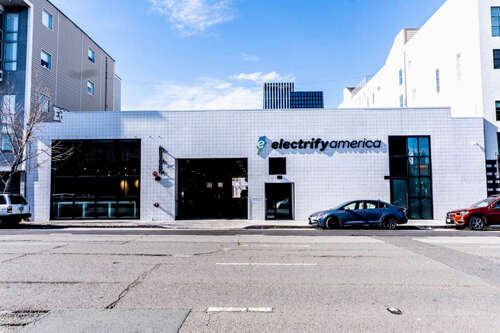
Roberto Baldwin
The Bay Bridge, as usual, was a mess. The link between San Francisco and Oakland, even on the weekends, can be a source of gridlock-induced frustration. After navigating through the toll plaza and the tunnel on Yerba Buena Island (the sort of halfway point between the two cities), I checked my state of charge and made my way to Electrify America’s flagship location in the City by the Bay (which is frankly both cities, but San Francisco has a better PR team).
The past few months, electric vehicles have been making headlines. But not in a good way. News of major US automakers General Motors and Ford reducing their output goals has people screaming that electric vehicles are doomed (they’re not). GM is still wading through manufacturing issues, leading to a reduction in its ability to build EVs on its Ultium platform. Plus, there’s the charging infrastructure, which, as detailed by just about every media outlet, is not great. Reliability issues are real and well-documented, and that’s horrible for EV adoption. It’s also bad for automakers and, more importantly, it’s terrible for the planet.
So it’s comforting to get some good news: Electrify America has opened an indoor location in San Francisco, and it just might be the future of charging.
Like other charging networks, Electrify America has had issues. Its relatively large footprint in the DC fast-charging realm also means it’s the biggest target for non-Tesla EV owners who have had issues with charging stations. For any of these companies to reap the financial rewards of the Inflation Reduction Act for charging, they need to increase their charging station uptime to 97 percent.

Roberto Baldwin
I thought about this as I pulled into the Electrify America flagship station at 928 Harrison St. in San Francisco. It’s an indoor facility with 20 DC fast-charging stations capable of delivering electricity at up to 350 kW. One is also a 50 kW CHAdeMO station for Leaf owners, or perhaps the occasional Mitsubishi Outlander PHEV. On my way to the station, the Electrify America app told me that 10 of the 20 stations were available. I liked my chances of securing a spot for my Hyundai Kona Electric.
At the station, I was immediately greeted by a friendly employee wearing a security outfit. She played the part of welcoming friend and low-level traffic enforcer, asking me to stop my vehicle while a BMW i4 backed into a spot. From the time I had checked the app to when I arrived, five additional stations had been filled; two were taken by BMWs that I followed into the building. I pulled into the first spot, which for some reason had the display opposite of the parking spot (all the other stations have displays that face the vehicles as they pull in). I jumped out and realized I had parked in the one CHAdeMO spot. Worried that a Nissan Leaf would arrive at any moment, I moved to another spot.
In the 45 minutes I was there, this was the only time anyone in the facility moved stations. Owners of EVs are well-acquainted with the station shuffle. You pull up to a seemingly working unit only to find out it won’t connect to the vehicle, doesn’t accept payment, or is just out of order due to cosmic forces none of us could understand. So you move your vehicle to another station, and then maybe another, until you finally can get some electricity flowing into your vehicle. That didn’t happen here.

